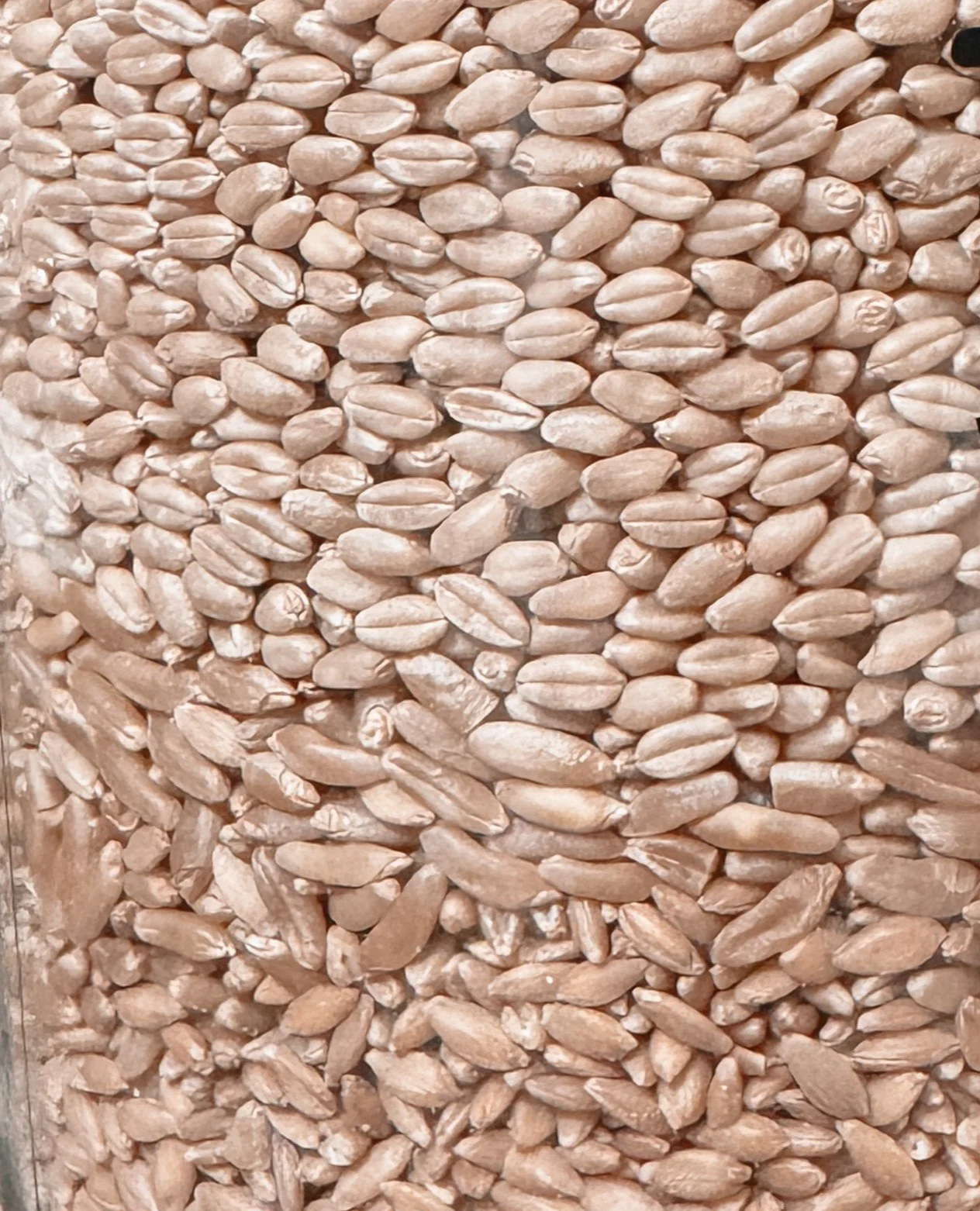Gluten: the new “F” word
It seems like everyone has a gluten sensitivity these days. After spending time in Europe eating every pastry in sight with no problem, I started a deep dive into the history of wheat and found that gluten is actually NOT my enemy, processed flour IS.
Store-bought flour is not it. Start making your own. I buy my whole grains from Grand Teton Ancient Grains I have tried other popular companies, but Grand Teton has come back the most consistent and is free of dirt/rocks/debris. They also provide a ton of education on their website.
· All wheat is not created equal! You can easily see and taste the difference. Buying your own wheat berries allows you to control the texture of your foods as well as the protein, gluten, nutrient, etc… content.
In 1924, the US started adding iodine to salt to correct iodine deficiency/goiter. Why were we deficient?
· In 1933 we started adding vitamin D to milk to correct D deficiency. Why were we deficient?
· In 1940, the US started adding thiamin, niacin, riboflavin, and iron to flour. Why?
(National Academies Press (US), 2003)
Answers:
In the late 1870s, in an effort to increase production efficiency and exports, the US adopted the roller mill to process whole grains. While the roller mill allowed for mass production of shelf-stable flour, it also ushered in an array of new health concerns. The new mills broke down once highly-nutritious wheat into a nutritionally-anemic dust. But, in the US economy, efficiency holds greater value than nutrition and health.
Feel free to fact check the following:
· The first head of the FDA, Dr. Harvey Wiley, attempted to outlaw (OUTLAW) the refined, bleached flour because of the potential health risks it would impose. (Wight, 2011)
· In 1924, a physician wrote a letter to The British Medical Journal expressing his concerns over the flour coming from the use of the roller mill. An excerpt from his letter is below:
“When the steel " roller flour mills " were introduced into this country from America a vital injury was inflicted on our national well-being. For the roller mill-unlike its ancient stone mill predecessor-abstracts from the wheaten berry the "germ" which contains, the essential nourishing matter of the grain. The residual " flour " consequently (after removal of the mineralized bran by " bolting") consists of little more than mere starch. It is this starchy powder, nowadays often bleached to a dead white by chlorine or hydrogen peroxide, in accordance with an artificially fostered fashion, from which has been made the "bread on which nearly two generations of children and adults have been brought up. It lacks the proteins, fat, vitamins, and mineral constituents present in the original grain, providing only an emasculated substitute which is not merely inefficient, but also directly harmful. For a dietary overloaded with starchy material produces fermentation and flatulence: it favours the development of an abundant intestinal flora embarrassing to the digestive economy, burdensome to the gastrointestinal organs, and favourable tothe free development and increased virulence of such pathogenic microbes as may obtain access to the intestinal tract.” (Shelly, 1924)
· Like I said above, this really happened & in 1942, the US responded by adding synthetic vitamins back into the flour from which they were removed. (Wight, 2011)
· Next, to give the artificially-fortified dust a longer shelf life, chemicals were added to “bleach” the flour into a more preservable product. (Wight, 2011)
· Here’s a cute clip from the FDA regarding the necessity of fortifying foods because a lot of what was being produced in the US was no longer considered “traditional food”:
“… to correct a dietary insufficiency that is recognized by the scientific community to exist and known to result in nutrient deficiency disease … ; 2) … to restore such nutrient(s) to a level(s) representative of the food prior to storage, handling and processing … ; 3) … in proportion to the total caloric content of the food, to balance the vitamin, mineral, and protein content …; and 4) … that replaces traditional food in the diet to avoid nutritional inferiority … (FDA, 1980, p. 6323)” (National Academies Press (US), 2003)
maxime placeat facere possimus, omnis voluptas assumenda est, omnis dolor repellendus. Temporibus autem quibusdam et aut officiis debitis aut rerum necessitatibus saepe eveniet ut et voluptates repudiandae sint et molestiae non recusandae. Itaque earum rerum hic tenetur a sapiente delectus, ut aut reiciendis voluptatibus maiores alias consequatur aut perferendis doloribus asperiores repellat.





